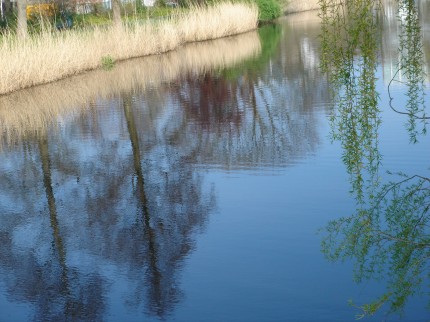The Crucible
Crucible:
* a ceramic or metal container in which metals or other substances may be melted or subjected to high temperatures
* a place or occasion of severe test or trial
* a place or situation in which elements interact to produce something new
Intensity and trial come to us all, hopefully. In other words, we are called upon to interact with life in a manner that yields new experience.
Using the above definition, provided by Lord Google, as a structural web:
1. a container. Our sensations, perceptions, emotions, thoughts, awarenesses are a series of containers. Breath connects the container inside with a broader container outside. We are contained by the wider world, and by the conditions in which we live. Containers within containers. The less we interfere, the more connected the containers become.
2. ah, the severe trial. Our perspective, sensory reliability, and refinement in awareness, our entire integrated instrument of self, responds to all of life’s activities. Demanding activities call upon us to extend beyond habits of protective stabilization and/or collapse, or combination of both. We all have our unique style of habitual interference, and unless we know better, we go full force with habitual means. But,when life becomes more demanding, our best use of self is needed. We can learn to see this like a slow motion video, observing ourselves in the rapids. Am I compressing or expanding, resisting or assisting? Can my breath connect me again? Can I allow new solutions? Where is my choice at this moment so I can allow fresh experience?
3. which leads ideally to the 3rd definition: creating a brainstate in which elements formerly seen as contradictory are now working together, due to a broader view. A severe trial can expand the container of possibility. Using Alexander tools of dynamic non-interference, spatial thinking, unity of self, we improve the instrument with which we solve problems. The container changes, so experience changes, and connection beyond the container changes. Expectation gives way to a curious welcoming.
Dynamic non-interference: meaning and means
As Alexander teachers and students, we view our participation in life’s activities through the often indefinable lens of Alexander principles. We use words to describe a wordless experience. We wrestle with the gap between experience and description. We improve the use of ourselves and can’t describe exactly how that happened.
Alexander Technique skills of intention and attention rely upon, and are deepened by, a refusal to interfere by habitually reacting, changing our shapes directly, relying on past information to assess present conditions, or rushing to outcome without consideration of means. It is a mental/emotional/sensory/physical process all at once, because we, as animals on Earth, are designed to respond totally to the totality.
The essential “pause to allow a new response” (otherwise know as inhibition in Alexander terminology) is not a deadening, freezing or collapse. It is the active and open state of curiosity that relies upon welcoming a new means of response. Instead of traveling the same, grooved pathways, we simultaneously intend both an activity and a new pathway for activation. This dynamic non-inteference is a continuous process through life that supports and requires curiosity and discovery. We refine the instrument of self by refusing to use it mindlessly and repeatedly in the same mode. This refinement requires dynamic intention and attention, a quietly enlivened state of self that informs all activity.
We each have to climb the mountain ourselves. With the assistance of an Alexander teacher, we forge your own ways, and with skills we develop from experience, we forge further onward. What was previously effortful becomes easier. Ease becomes the new barometer. A happy curiosity quiets effort. This is where the rubber of dynamic non-interference really hits the road. We learn to welcome experience, so we can learn more about skills in considered response. Every activity presents an opportunity to learn.